If those Hallmark TV movies are to be believed, the only place to revel in the yellows, golds, and reds of fall are somewhere north of New York City and south of Bangor, Maine. But there’s autumn color aplenty in every corner of the country. You just have to keep your eyes open for it.
Door County, Wisconsin
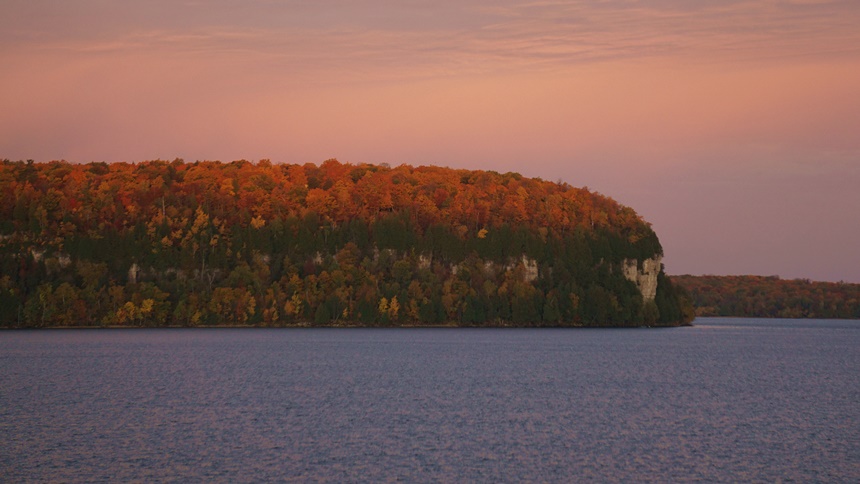
My eyes are focused on the top of Wisconsin’s 150-year-old Cana Island Lighthouse, an exclamation point of white, red, and black set against a blue sky above and, concealing its base, a curtain of broadleaf trees exploding in a riot of autumn color.
But my nerves are preoccupied with this tractor-pulled wagon that is transporting me and a dozen or so fellow passengers across a shallow, narrow strait between the Wisconsin mainland and the island. The frothing surf of Lake Michigan sloshes over the sides, soaking our feet.
As the whitecaps reach the seat of his tractor, our driver, Mark, stands up, peering over the front wheel to be sure he’s staying on course across a submerged causeway of white, round stones.
“A couple of weeks ago I stood up like that, and a lady in the wagon started to panic,” he tells me later. “She thought I was about to abandon ship!”
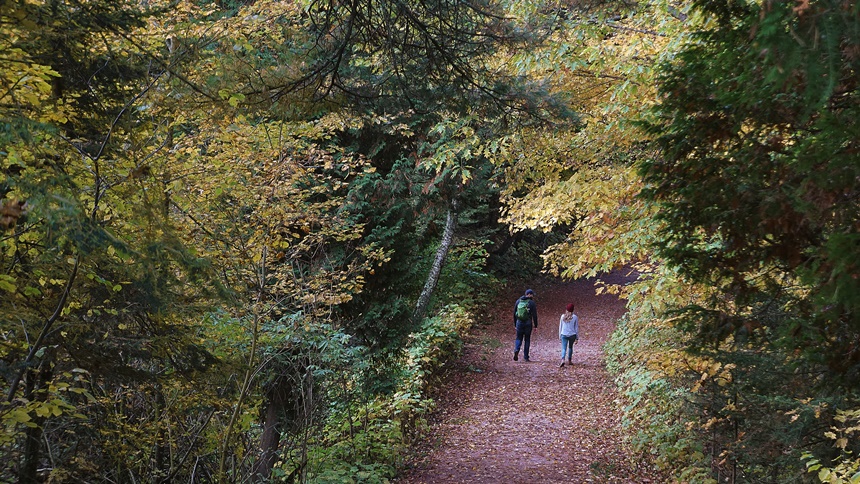
It is only October, but the gales of November have come early, as the late, great Gordon Lightfoot sang in his Great Lakes ballad, “The Wreck of the Edmund Fitzgerald.” For sailors, that’s bad news. For visitors like me, the crashing freshwater surf only enhances the adventurous delights that await around every turn of winding road and beyond and every gentle hill of Wisconsin’s Door County.
Each fall just north of Green Bay — as the land narrows and dips a slender finger into the chilling waters of Lake Michigan — Door County bursts into flaming colors of red and gold. Here, visitors make the most of one last chance to explore the farms, boutiques, and rugged coastline that makes this one of America’s most picturesque spots.
You can soak those colors in on a shoreline trail in Whitefish Dunes State Park, where forest meets the wild waters of the Great Lake. On the Green Bay side of the peninsula, sit on an Adirondack chair outside the century-old Edgewater Resort, sipping locally roasted coffee and pulling up your collar against the chill while viewing distant crowns of colored leaves sitting atop high white cliffs. Those stone walls are, remarkably, part of the 650-mile-long Niagara Escarpment, which stretches from here all the way to those legendary falls north of Buffalo, New York.
Traverse City, Michigan
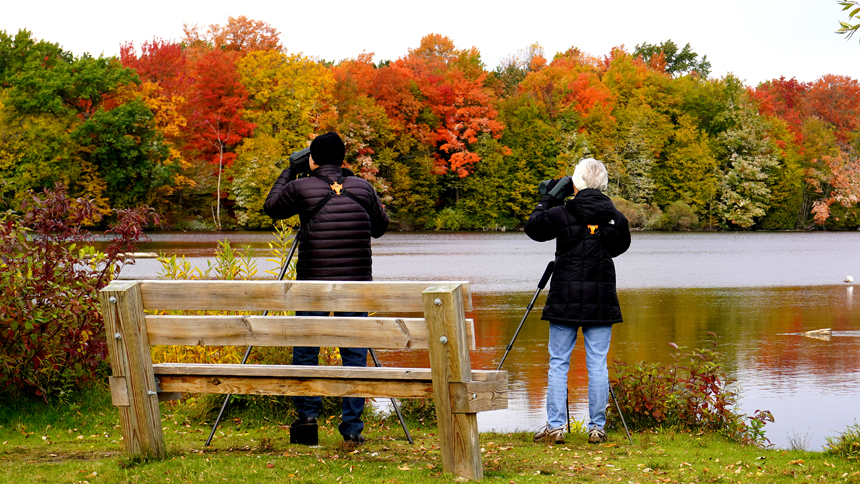
Experienced leaf peepers know they can extend their fall viewing pleasure by following the height of the season from north to south, tracing the cool weather as it progresses downward.
Traverse City, nestled between two slender peninsulas that poke into Lake Michigan, is one of the rare places where you can take advantage of that progression while staying in one place.
With one of Traverse City’s modern resort hotels or quaint inns as your home base, venture south from town in early to mid-October to witness the inland maple, oak, and beech trees flaming into action. (You don’t even have to leave town to see an abundance of color: Traverse City is a recognized “Tree City,” with more than 10,000 registered trees lining its residential streets.)
But just as that show begins to fade, vibrant reds, oranges, and yellows are just beginning to erupt along the two peninsulas to the north. Surrounded by warmer lake water, the trees on Old Mission and Leelanau Peninsulas take their own good time getting around to their color change, befitting the laid-back vibe at the wineries and orchards that dot the two-lane roads lacing them from end to end.
Big Bear Lake, California

Ah, Southern California, home of swaying palm trees, orange-dappled citrus groves…and fiery autumn leaf displays?
Yep. Just 75 miles east of Los Angeles, in the San Bernardino Mountains, golden quaking aspens, cottonwoods, black oaks and big leaf maples all behave as if they’re natives of the White Mountains of New Hampshire.
In-the-know California leaf peepers make the trip every October and November, most of them driving the Big Bear Lake Loop, stopping at the well-marked photo spots.
To make your old-fashioned fall fun experience complete, head over to the charming little town of Oak Glen, where you can pick juicy apples, drink fresh-squeezed cider, and down a box or two of apple cider donuts.
Tallahassee, Florida

Snowbirds who think they’ve sacrificed the beauty of autumn by moving to the Sunshine State need drive no farther than the state’s panhandle to get a healthy dose of fall foliage.
Just northwest of Tallahassee, Torreya State Park is ablaze each fall with southern sugar maple, sweetgum and sourwood trees. A bit farther west, in Falling Waters State Park, the seasonal color show frames the park’s 74-foot-high waterfall, Florida’s tallest.
And to Tallahassee’s south, at Edward Ball Wakulla Springs State Park, the crystal-clear waters of one of the world’s deepest freshwater springs reflect the changing colors of red sugar maples, beech trees, and even purple beautyberry bushes.
No promises of unexpected thrills here, but be aware that this is also the filming locale for 1954’s Creature from the Black Lagoon.
Santa Fe, New Mexico
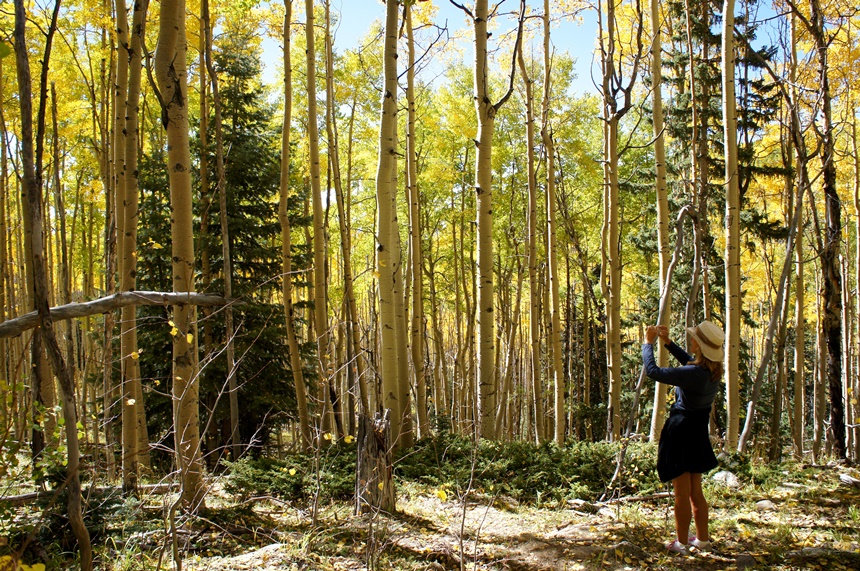
“There’s nothing like the aspen trees here in the fall,” longtime Santa Fe resident Shirley MacLaine once told me during an interview. “You just have to look out for the bears.”
But if there’s safety in numbers, then Yogi and Boo-Boo will be no threat at the height of the October leaf peeping season, when thousands of visitors head to the mountains above Santa Fe to see the slopes ignite with blinding yellow.
The most popular spot is the Aspen Vista Trail, about a half-hour north of town on Route 475. Be prepared to jockey for a parking space at the Aspen Vista Picnic Ground and join a parade of people heading up the closed-to-traffic Hyde Park Road — but stick with it. Make sure to go at least as far as the Vista Grande Overlook Observation Site, about a mile in.
Farther south (and a bit later in the season), jump aboard the Sandia Peak Aerial Tramway, just outside Albuquerque, and soar above a sea of yellow, red, and orange.
Lost Maples State Natural Area
Vanderpool, Texas
tpwd.texas.gov/state-parks/lost-maples

Among the latest-to-arrive autumn displays in the U.S. is the one that crawls across Texas from mid-October to late November — and perhaps the best place to catch fall’s final gasp is this park in the Texas Hill Country, northwest of San Antonio.
As the park’s name suggests, the banks of the Sabinal River, which runs through the place, are lined with red and orange maple leaves each fall. Venture along the trails that lead to the park’s limestone bluffs and canyons, and you’ll find impressive, colorful stands of bigtooth maples and red oaks.
If you’d rather not venture out of the city, you’re in luck: The Fort Worth Botanic Garden is a firepot of red every November as its maple trees roar into their fall show. The best time to drop in is during the Fall Japanese Festival each November.
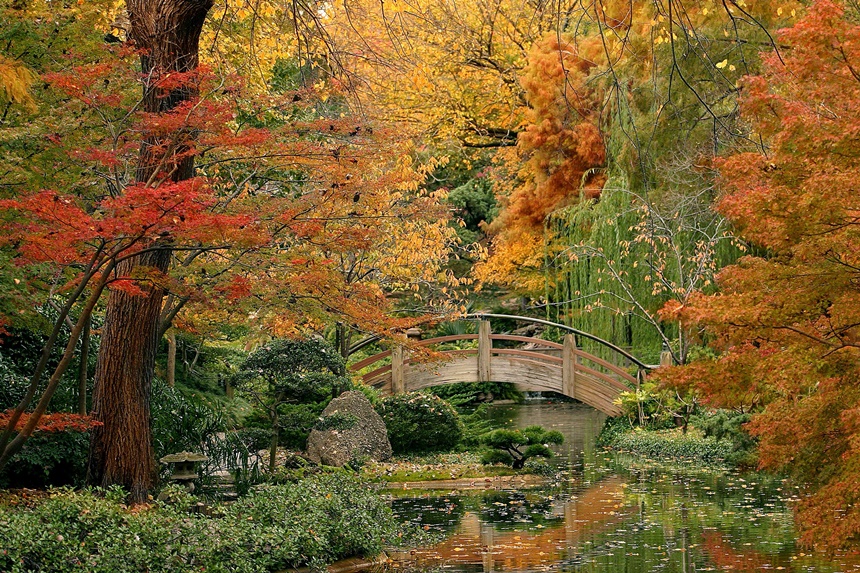
Black Hills, South Dakota
blackhillsvisitor.com/plan/fall-foliage-hot-spots

The colors of fall play hide and seek among the plentiful pine trees in the mountains south of Rapid City, but the patient leaf lover will still find plenty of seasonal spectacle along the area’s winding roads and twisting trails.
Along the Spearfish Canyon State and National Forest Service Scenic Byway, spruce, aspen, birch, and oak trees cling to the steep limestone hillsides that plunge into the rushing waters of Spearfish Creek. You’ll want to pull over to take in the spectacle of 60-foot Bridal Veil falls.
Become a Saturday Evening Post member and enjoy unlimited access. Subscribe now




Comments
Thanks, Steve! Obviously, 75 miles west of Los Angeles is somewhere in the Pacific Ocean! Glad you liked the article!
Thank you! We will make those corrections.
In your leaf-peeping article, which was so enjoyable, there were 2 errors in the Big Bear Lake, CA, post. Big Bear is 75 miles East of Los Angeles, not West. Also, the mountains around Big Bear range between 5000 to 10,000 feet above sea level; but Oak Glen sits down from the lake not above the lake. I live in a Fall Festival of autumnal color in Pennsylvania now. But as a boy I grew up exploring the San Bernardino Mountains.